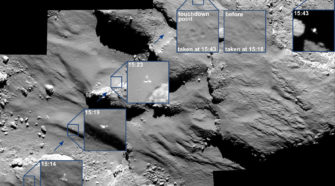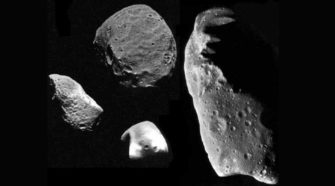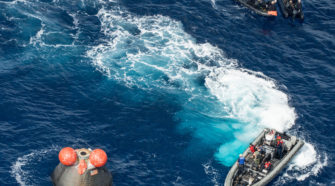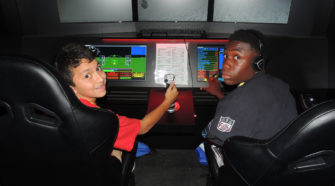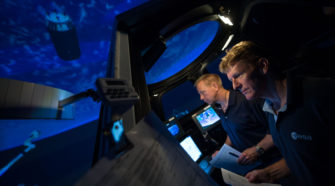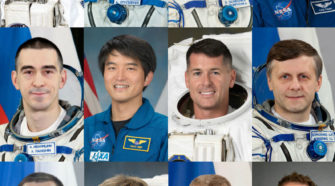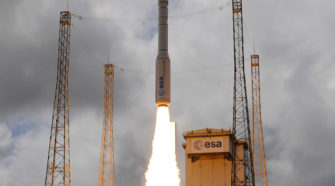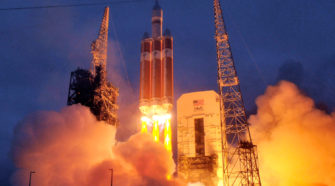Issue #10 (February 2015)
Philae bounces into history books
The European Space Agency (ESA) led Rosetta mission, made history this past year, and, captured the attention of people around the world as it became the first to orbit and land on a comet. The spacecraft achieved its goal after deploying a washing machine-sized lander onto the surface of Comet 67P/Churyumov-Gerasimenko on Nov. 12. The …
Astronomical serendipity
Since 1594, when Johannes Kepler predicted that there should be a planet between Mars and Jupiter, astronomers had been searching for that “missing planet.” When Giuseppe Piazzi discovered Ceres in 1801, the scientific world thought that he had ended the search. Then Ceres disappeared from sight, only to be recovered one year later. Astronomers breathed …
Photographing the planets (part 2)
Following on from last issue where we looked at the equipment and capture of video to produce a photograph of the planets this issue looks at the processing of the video into an image. This article really only scratches the surface of image processing as there are so many variables and methodologies that can be …
Exploring the Dawn of the solar system
As we celebrate the tenth anniversary of Huygens’ descent to the surface of Saturn’s giant satellite Titan, humanity’s first landing on an outer solar system moon, and the continuing success of its parent craft Cassini, we look forward to an extraordinary year of robotic solar system exploration in 2015, and one which should bring new …
Land, sea and space: Naval aviators have led the way
The United States Navy and NASA have had a working relationship for over 55 years now and they continue to complement each other in many different aspects of space exploration. This relation was forged way back in the late 1950s when NASA first began to look for pilots to become Astronauts that would eventually fly …
National Flight Academy makes learning an adventure
Who says learning can’t be fun? Certainly not the leadership team at Ambition who delivers “inspired play” in six-day immersive programs at the National Flight Academy located in Pensacola, Florida. It all starts with the story – a heart-pumping, adrenaline-filled mission with squadrons competing to successfully finish a task. Whether it is a race or …
Tim Peake ready to become United Kingdom’s official ISS resident
On 20th November this year, a Union Jack Flag will be safely stored on board a Soyuz rocket, and, along with its owner, will launch from the Baikonur Cosmodrome in Kazakhstan and make its way to the International Space Station. This is not the first time that a British born citizen has flown in space, …
Crews named for future ISS missions
NASA and its International Space Station partners have announced the crew members for three upcoming missions to the space station during 2016 and 2017. Expedition 48: Jeff Williams, NASA Alexey Ovchinin, Roscosmos Oleg Skripochka, Roscosmos Kate Rubins, NASA Anatoly Ivanishin, Roscosmos Takuya Onishi, JAXA Expedition 49: Anatoly Ivanishin, Roscosmos Kate Rubins, NASA Takuya Onishi, JAXA …
ESA experimental IXV spaceplane completes research flight
An experimental vehicle to develop an autonomous European reentry capability has completed its mission. ESA’s Intermediate eXperimental Vehicle flew a flawless reentry and splashed down in the Pacific Ocean just west of the Galapagos islands. The IXV spaceplane lifted off at 13:40 GMT (10:40 local time) on 11 February from Europe’s Spaceport in Kourou, French …
Orion spacecraft performs nearly flawlessly on first test flight
NASA marked a major milestone on its journey to Mars as the Orion spacecraft completed its first voyage to space on Dec. 5, 2014, traveling farther than any spacecraft designed for astronauts has been in more than 40 years. Orion blazed into the morning sky at 7:05 a.m. EST, lifting off from Space Launch Complex …

